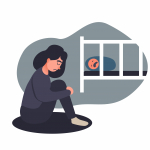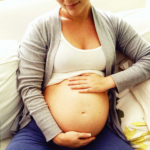Our Perinatal and Reproductive Psychiatry team often discusses clinical cases in Rounds, a confidential forum in which we can get advice and consultation from peers who also work in the area of Women’s Mental Health. We discussed a patient’s situation recently that highlighted the controversial area about how to prevent mood episodes in a woman planning for pregnancy.
All identifying information has been removed from the case for confidentiality purposes.
The patient is a married woman in her early 30’s, employed full-time, who has been doing very well in her work and personal life. She has been diagnosed with bipolar II disorder. She has a history of one psychiatric hospitalization for depression more than 10 years ago, which had followed a hypomanic episode. Similar episodes of hypomania had recurred several times, but she was not hospitalized. She has been maintained on oxcarbazepine 900 mg. daily, olanzapine 5 mg. nightly, and citalopram 40 mg. daily. She was completely well on this regimen for nearly 10 years of treatment, with no hypomanic or depressive episodes. She discontinued all medication one year prior to consultation, and remained completely asymptomatic. The patient had well established care with a psychopharmacologist and therapist, both of whom had known her for many years and whom she saw regularly.
This case raises questions about the use of psychopharmacologic prophylaxis in a patient who is planning pregnancy. At what point would medication be added back after discontinuation? One could consider reintroducing one or more of her medications prior to conception, or monitoring her carefully over the course of pregnancy, and considering treatment if symptoms emerged. Available data indicate that women with bipolar disorder are at high risk for recurrent illness after the discontinuation of medication. About two-thirds of women who discontinue mood stabilizer prior to conception experience recurrent symptoms (usually depression) during pregnancy (Viguera et al.). The postpartum period is a particularly high risk time for recurrences, which also must be considered. The patient is concerned about experiencing recurrent symptoms, but at the same time, she is concerned about exposing her baby to a psychotropic medication unnecessarily.
If the decision is made to treat prophylactically, which medication would one use? Controlled studies of oxcarbazepine in pregnancy are lacking. Oxcarbazepine is structurally similar to carbamazepine, which has been found to increase the rate for congenital malformations in the first trimester, and therefore, it is possible that the reproductive safety data for oxcarbazepine are similar. While there are limited safety data on the use of atypical antipsychotics in pregnancy, the data are growing. Olanzapine has not been shown to increase the rate for congenital malformations with first trimester exposure, but data are limited. Using antidepressant monotherapy is not recommended for bipolar disorder (Truman et al.). Would it be best to restart the regimen which presumably kept her well for many years?
If the decision is to watch and wait, and she relapses during pregnancy, which medication or medications would be best to treat her with at that time?
I welcome the sharing of opinions about how to think about a case like this, acknowledging the difficulty in forming an opinion without having evaluated the patient. There are many factors to consider in this particular situation, and it is unlikely that there is one best answer.
Laura Petrillo, MD
Truman CJ, Goldberg JF, Ghaemi SN, Baldassano CF, Wisniewski SR, Dennehy EB, Thase ME, Sachs GS. Self-reported history of manic/hypomanic switch associated with antidepressant use: data from the Systematic Treatment Enhancement Program for Bipolar Disorder (STEP-BD). J Clin Psychiatry. 2007 Oct;68(10):1472-9.
Viguera AC, Whitfield T, Baldessarini RJ, Newport DJ, Stowe Z, Reminick A, Zurick A, Cohen LS. Risk of recurrence in women with bipolar disorder during pregnancy: prospective study of mood stabilizer discontinuation. Am J Psychiatry. 2007 Dec;164(12):1817-24.








As a novice Psychiatric prescriber, I am confronted with the issue of medication during pregnancy, and would appreciate most current practice guidelines.